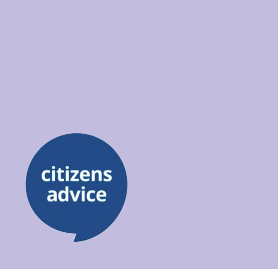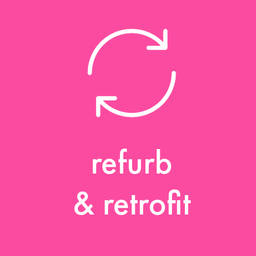Energy Efficiency Schemes Are Failing British Consumers

The average recommended home improvements on an Energy Performance Certificate (EPC) amount to over £10,000 for most consumers with a below level C grade.
That's because they include costly retrofit measures like changing windows, changing heat and energy sources and in many cases, adding insulation measures.
With the UK economy facing a depression level economic event. This sort of bill is beyond the reach of most homeowners, renters and landlords.
Energy Efficiency Schemes
The government schemes available to assist consumers include the most well known (or possibly not - find out more);
Energy Company Obligation (ECO4)
The ECO scheme is for home upgrades that include solar, insulation and heat system upgrades. The benchmark for receiving this funding varies from local authority to councils, some set funding support at £30,000 of joint income, other start at £36,000 and there is no consistency. The scheme is administered by your current energy provider supplying your property, but can be applied to via councils if you are on benefit payments.
Great British Insulation Scheme (GBIS)
The clue is in the name for this one. It's about insulation. It can assist the installation of insulation.
Home Upgrade Grant (HUG)
Really aimed at rural homeowners, this scheme was for owners without a functioning gas boiler, who were on low incomes.
Citizens Advice: What They Discovered
The amazing research team at Citizens Advice spent a considerable amount of time and resources visiting and interviewing a group of homeowners to discuss their experience of these schemes.
The research which we're reporting on, was sad. Astonishing even. And need to be a catalyst for change.
Many of the respondents had little or no knowledge of the improvements they could get help with;
"Almost two thirds (64%) of homeowners hadn’t heard of the ECO scheme."
In fact, the lack of information was compounded by receiving marketing materials from commercial companies;
"Many weren’t aware of the existence of the schemes until they were sent flyers or approached directly, often by private companies. Some felt that the prospect of free energy efficiency upgrades was “too good to be true”, with many even worrying they were being scammed."

Who Are Advocates People Trust For Advice?
The point of sale for home improvements is always going to be the people that have the most access to home owners. So it was no surprise that builders and tradespeople represented the most trusted resource for advice form the survey respondents.
This is an area which already has some work being done by organisations like the UK Green Building Council, but more could be done by organisations like the Federation of Master Builders.
In fact the second most likely resource people used was the personal experiences of their family members.
This information is important because a bad experience emanates out in a wide family group, as the report identifies;
"This means that positive individual experiences of schemes are essential for their overall success. One household being satisfied with their experience can lead to multiple recommendations and further installations, and can persuade more sceptical households to engage."
What Is the Experience Of Researching Schemes?
Not good. The report outlines numerous examples of the poor experience of consumers. They simply cannot find trusted, non sales, information only, unbiased guidance.
Why does this happen.
We can liken this to the well known scam this editor investigated 15 years ago for British passports. That problem still exists.
It is incredibly difficult to know who to trust. And trust matters. Feckless insulation companies that created the recent are just part of the problem.
Because most people don't want to be a builder, they have very limited understanding of what needs to be done to their home to make it energy efficient. The cost of preparation and other improvements are a mystery. And once people have chosen a solution, this could happen;
"Even when the main retrofit is delivered for free under a Government scheme, some participants were asked to pay for supplementary work to prepare their homes for an installation. Some participants in our research were only able to continue with the process by completing preparatory work themselves or asking for financial support from family and friends. Others dropped out of the process entirely after being asked to pay for supplementary work."

Customer Experience of Retrofit
There is no consistent supply of success stories. Some consumers had terrific experiences. A few had difficult coordination, but this isn't a problem with companies so much we reckon. There is a shortage. So it's little wonder that consumers might have to wait months for people to become available;
“In this area there’s only two companies that I can use. One was full up, they couldn’t come up. The other jumped at the chance, said it’d be no problem…They got the voucher, said we’ll put you on the list, said the scaffolder would turn up at X date and then never did. It took a few months for them to do anything, I kept chasing and chasing.” - Alistair
In addition to the difficulties securing work, many homeowners have difficulties with programming in works around their care responsibilities, or their own disabilities.
"Frida lives with her son, who is autistic. While the family had a positive experience with one set of considerate contractors, Frida’s son had a distressing experience with other installers.
In Frida's own words;
“The guys who fitted the windows were really friendly and very appreciative that it was our house and took into account my son having autism and what have you…The people who fitted the ventilation system were very disrespectful and just awful. They came twice and everything was frenetic, they made my son freak out. They were very unprofessional.”
Perhaps the most difficult challenge for everyone is something we have come across since we started the magazine.
There is no single, one mark, sign or logo that unifies the products and services which are approved for retrofit. It's something we mentioned at every conference we attended and feedback about the Trustmark system, is often unprintable.

We recommend you read the report in full, particularly the recommendations. They hit home everytime.
Citizens Advice is the impartial resource we need for this sort of advocacy. Now we need someone to actually take action.
Isn't that the governments job?

